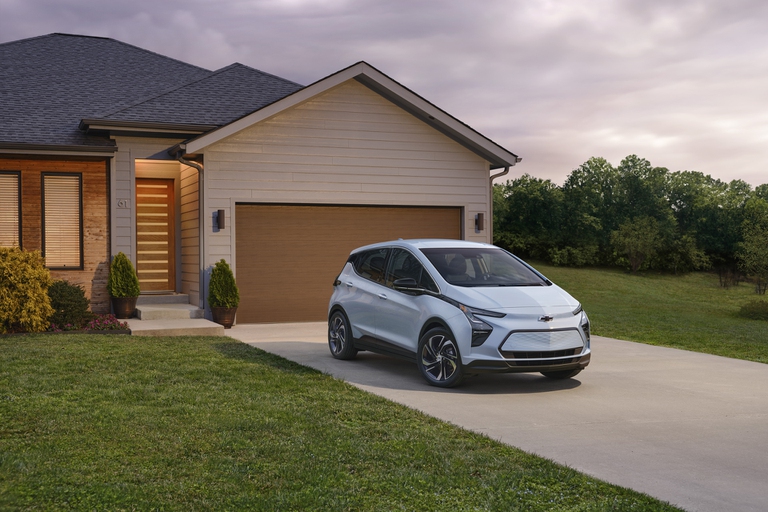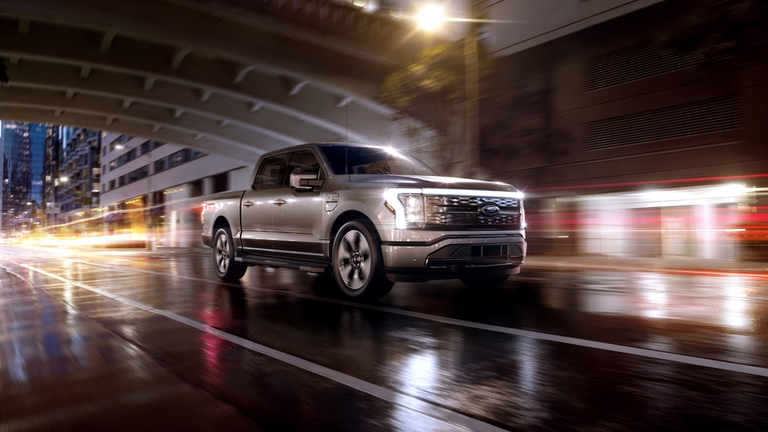https://www.lifegate.it/dimensioni-peso-auto-elettrica-contano
- |
- In the United States, electric cars are increasingly larger and heavier, with negative impacts on the environment, costs and safety.
- The lighter and more compact the electric car, the more efficient and sustainable it is throughout its entire life cycle.
- The phenomenon of electric "gigantism" risks contaminating Europe too.
Building smaller, lighter electric cars would have numerous benefits, from the benefits in terms of efficiency and emissions to the reduction in the use of raw materials and safety.Yet, the industry is going in the opposite direction, starting in the United States.To take stock of theelectric car thought about it recently Guardian which analyzed how American car manufacturers are increasingly pushing the production of large and heavy electric SUVs which, as the article explains well, are certainly a better choice than their equivalent petrol models (diesel has very little diffusion in the USA) , but in many cases they have a worse overall impact than many smaller petrol cars."Gigantism" is not a trend that concerns only the United States, where the electric mobility transition is one of the pillars of the Biden administration to tackle the climate crisis, but it is a problem that increasingly concerns Europe too.

Producing lighter and more compact electric vehicles means advantages for the environment and safety
We remain in the United States where last April General Motors announced theproduction exit within the year of its best-selling electric car, the Chevy Bolt. Appreciated for its compact dimensions and accessible price (less than 30 thousand dollars, thanks also to access to the benefits ofInflation reduction act, the bill which contains a series of measures aimed at encouraging, among others, the electric mobility), the Bolt was launched in 2016 to counter the more compact Tesla.
General Motors has announced that Bolt production lines in Michigan will be reconverted to the construction of new models, still electric but of decidedly impressive dimensions, such as Silverado And GMC Sierra.An almost obsession with large SUVs and pick-ups in the United States, where this type of car has always been highly appreciated and which is now gaining acceptance also in the various electric versions;General Motors has announced its goal of selling 1 million zero-emission cars by 2025. Producing large electric cars is more financially profitable for manufacturers because it ensures higher margins, but other aspects should be considered, in addition to the economic ones.Let's see the most relevant ones.

The White House aims to sell 50 percent electric vehicles by 2023
The Guardian's analysis then continues, enriched by a series of testimonies and research that show how in the United States those who want to choose an electric car have fewer and fewer compact and accessible options, in the face of a proliferation of electric models, but fewer and fewer efficient. The Biden administration aims to sell 50 percent electric cars by 2030, today we have a market share of just over 5 percent, a little better than Italy's 4 percent.Furthermore, the average price of an electric car in the US is around 15 thousand dollars higher than a medium-segment petrol car.
And the increase in size certainly doesn't help make electric cars more accessible, On the contrary.But the price is not the only problem.Unnecessarily excessive dimensions not only worsen sustainability as a whole, with a waste of large quantities of rare minerals such as lithium and cobalt needed to build the enormous batteries, but the bigger and heavier an electric car is, the more energy it needs to move.Not to mention the space taken up in parking lots.

Electric car:the analysis of the American council for an energy-efficient economy
That electric vehicles are always a more virtuous choice in terms of emissions, efficiency and costs of use, compared to an equivalent model powered by petrol or diesel, is an irrefutable certainty demonstrated by studies and research.But the dimensional data cited several times makes the difference.As the rankings showAceee, the American Council for an Energy-Efficient Economy, an independent research body that supports policies in the USA to reduce energy waste and fight climate change, Large electric vehicles are less efficient than a more compact petrol car, mainly due to the emissions produced throughout their entire life cycle, starting from production.
And there is another aspect that worries overseas:increasingly large and expensive electric cars do not allow an accessible transition, effectively preventing low-income classes from implementing more sustainable purchasing behaviors.Again according to Acee's analyses, compact electric models such as the aforementioned Chevy Bolt obtain a much better rating than, for example, the F-150 Lightning, the electric version of the Ford pick-up, long the best-selling model in America .And returning to accessibility, the example ofElectric hummer, which with a price of 110 thousand dollars, alone has a battery that weighs as much as a small car, not to mention the quantities of lithium contained.In short, the electric market seems to follow opposite trends and logics depending on the markets, which are not always rational.

The "gigantism" of the electric car risks contaminating Europe too
As numerous studies show (as well as some "trivial" intuitions), larger vehicles also have other disadvantages, in addition to the aspects already considered.Think about the risk they can represent for the safety of pedestrians and cyclists, especially in the city, due to their unnecessarily imposing presence, the speed and power they can push (see recent news events) to risky driving styles and behaviors.If it is true that the replacement of SUVs and large endothermic vehicles in general with electric-powered equivalents is always a step forward, the dimensional aspect is worrying:according to an estimate by the Guardian in the United States, where transport is the main source of emissions, by 2025, 78 percent of all vehicles sold will be SUVs, trucks or vans, the size of which is difficult to imagine will reduce.THE'Europe, for its part, risks following the American example, with electric SUVs and crossovers at the top of the sales charts, many with dimensions (and weights) on a worrying rise.

Because the sustainable lightness of the car (especially if electric) is so important
The size of a car, as we have seen, does a lot.But not everything.Weight also has a big impact.Reducing the weight of a car means having to use less energy to move it:numerous studies show that reducing weight a 10 percent car reduces consumption by up to 8 percent.But it's not enough.Using lighter materials can reduce the weight of a car by half.A problem, that of weight, which concerns electric cars even more, whose powertrain (battery and electric motor) weighs on average 125 percent more than an endothermic model.So what can the automotive industry do to reduce the weight of a car?Use materials such as magnesium instead of steel for example:it is a material available in large quantities and with excellent qualities of resistance and recyclability, which makes it one of the materials on which the automotive industry will focus more in the future.In addition, new production processes inspired by the circular economy and in general i neomaterials they will certainly be able to add further advantages.

New York taxes cars by weight
Tax heavy cars and reduce the size of batteries to support the benefits of electrifying transport.The proposal comes from the American magazine Nature which in an article explains well how to push the market to offer lighter electric cars, and thus maximize the benefits for the climate and safety, a "nudge" could be needed.That is, taxing cars based on weight, as already happens New York.“A problem that has received too little attention,” explains the article, “is the progressive increase in the weight of vehicles which, between pick-ups and SUVs (which alone represent 57% of sales in the United States), has increased up to 32 percent since 1990”.
Nature's analysis on the impact of weight continues with a series of aspects already addressed, such as batteries, consumption, safety in the event of a collision and so on; the electric version of the aforementioned Ford F-150 weighs 700 kilos more than the similar petrol model.Nature goes further, however, stating that the number of victims involved in accidents is destined to increase with the progressive increase in weight of electric vehicles, with risks both for other lighter vehicles and for pedestrians.Heavier electric vehicles also mean more particulate emissions, due to brake and tire wear.
But Nature's analysis also touches on more complex aspects, such as relationship between social costs and emissions, relating excess weight to air quality and social costs for road safety. The solution? More than a tax based on weight, which penalizes heavier vehicles, as the author of the article suggests, could be useful a tax credit for lighter and more efficient vehicles, a sort of incentive to support lightness, perhaps with a criterion that also rewards economic accessibility.
